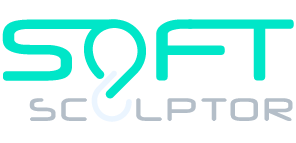Meta’s Tectonic represents the pinnacle of distributed file system architecture, designed to address the storage demands of exabyte-scale data. Originating as the Warm Storage project in 2014, Tectonic has evolved into a storage powerhouse, accommodating the diverse and massive data storage needs of Meta’s expansive ecosystem.
The Evolution from HDFS to Tectonic
Previously, Meta relied on a combination of HDFS, Haystack, and f4 for data storage, each with its limitations in terms of scalability and structured data handling. Tectonic emerged as a unified solution, consolidating multiple storage scenarios into a single, efficient cluster.
Architectural Breakdown of Tectonic
At its core, Tectonic comprises:
- The Client Library: Interfaces between applications and the file system, managing data requests and responses.
- The Metadata Store: A sophisticated key-value store that maintains file metadata, ensuring quick retrieval and update operations.
- The Chunk Store: The actual data storage layer, handling the data chunks and their distribution across the system.
Innovative Design Principles in Tectonic
Tectonic’s architecture boasts several innovations:
Layered Metadata Model: By abstracting metadata into a hierarchical key-value model, Tectonic achieves unparalleled scalability and load balancing, which effectively mitigates data access hotspots.
Stateless Metadata Layers: These layers operate independently, scaling horizontally to match workload demands and interacting with Meta’s ZippyDB for persistent, stateful storage.
Erasure Coding in the Chunk Store: Tectonic employs erasure coding to maintain data reliability at a fraction of the storage cost required by traditional replication methods.
Transactional Consistency: The Role of ZippyDB
ZippyDB’s transactional capabilities are crucial for Tectonic’s Metadata Store. They provide the atomicity and consistency required for a distributed file system, particularly when executing complex operations like directory renaming. However, the lack of support for cross-shard transactions in ZippyDB poses challenges for certain metadata operations.
Erasure Coding: A Game Changer in Data Storage
With erasure coding, Tectonic dramatically cuts storage costs while ensuring data reliability. This method requires only about 1.2 to 1.5 times the original data size for redundancy, as opposed to the thrice-fold requirement of replication.
Tectonic by the Numbers: Meta’s Storage Behemoth
The largest Tectonic cluster boasts around 4,000 storage nodes, with a total capacity nearing 1,590 petabytes. This immense scale effectively supports the vast array of use cases within Meta, showcasing Tectonic’s capability as a leading distributed file system.
As the digital universe continues to expand, Tectonic’s architecture provides a blueprint for future systems, aiming to harness the massive potential of data while maintaining efficiency, scalability, and reliability.
Part 4 is here



